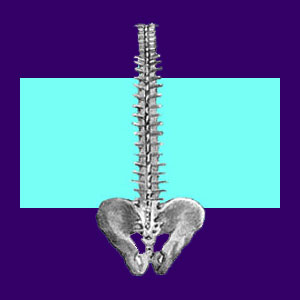
Lordotic straightening is a common diagnostic conclusion found in both the neck and lower back. This loss of spinal curvature is often blamed for causing back pain and neck pain conditions, when in fact, the loss of lordosis is often merely a side effect of a muscular spasm.
Some patients do suffer from structural issues which make them endure transient or permanent lordosis loss, but in most cases, much of the normal spinal curvature will be regained when the cause of the painful back symptoms resolves. To put it simply: In a few patients, the loss of typical curvature may be the reason for pain, but in most patients, it is a result of the actual symptomatic source process and an effect, not a cause unto itself.
This investigative article details reductions in cervical and lumbar lordosis and how these factors figure into the potential symptomatic mix of chronic dorsalgia.
What is Lordotic Straightening?
The lordotic curves exist in the cervical spine and lumbar spine. They are partially responsible for providing support for the weight of the body and also help distribute stress and force throughout the vertebral column to prevent injury.
When the lordosis straightens, the condition may be described as a straight spine, a straight neck or a military neck, depending on the location of the syndrome. A loss of spinal curvature is often implicated as a source of pain when typically it is a direct result of an already present back muscle spasm condition due to some other causation.
In these cases, there may be complicated and even invasive treatments arranged, when the entire time, the lordotic straightening is just an effect of a greater causative process. It is akin to saying that fever is a causative condition, when in reality, it is the direct result of a flu or infection. It is yet another painfully unenlightened medical ideology demonstrated here.
Sources of Lordotic Straightening
In some scenarios, the source of symptoms will be a structural issue in the spine due to injury or degeneration, while in other cases the cause can simply be regional ischemia.
Some spinal abnormalities can create spasms in the muscles, which in turn straighten out parts of the spine in response to the contraction. This is very commonly seen in acute injuries of all sorts, regardless of the severity of the damage.
Oxygen deprivation back pain describes a condition in which the muscles remain extremely tight and tense almost all the time. This creates chronic hypolordosis, which can be very uncomfortable and create a feeling of back muscle tension throughout the entire spine. I suffer from this problem myself in the lumbar and cervical regions. It is no fun.
Reduced Lordosis Guidance
Patients often come to view this loss of spinal curvature during MRI testing. It is so typical to see patients with back pain or neck pain demonstrate a loss of normal lordosis. I know many chiropractors and some physical therapists who use this as a chance to put the patient into continuing treatment, with the goal being to re-create the normal curvature. This process is typically painful and ridiculous, since there is a reason why the muscles are in spasm. Trying to force the curvature back through exercise or spinal adjustments is pure torture and completely ineffective at that!
I suffered this fate for 18 years of treatment. I still have the decreased lordotic curves even after thousands of chiropractic adjustments over decades. If your care provider blames your loss of lordosis as the primary source of pain, think carefully before going along with the diagnosis.
In some cases, you may have extraordinary structural issues in your spine and the diagnostic theory may be correct. However, this represents a very small percentage of patients who are diagnosed with lordotic loss. In all other cases, tell them that you know that the lordosis is compromised because you have pain. Tell them to cure your neck or back pain and the lordosis will likely to return to normal, or near normal, almost immediately.
Watch how your insight will open their eyes and surprise them with something most patients never demonstrate… The power to question.





